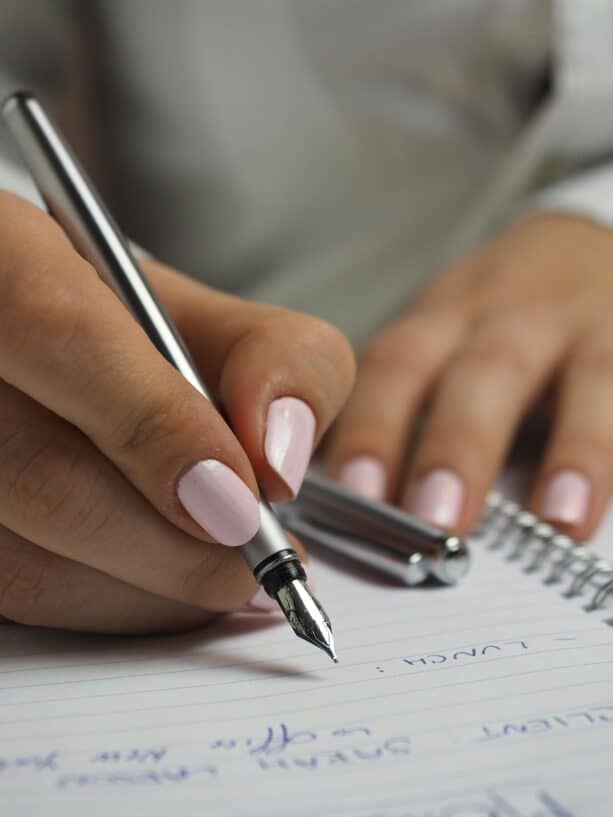TL;DR –People from relational trauma backgrounds often have underdeveloped self-care tool chests—not because of personal failure, but because their caregivers couldn't model these skills, their developmental environments lacked safety, and survival took precedence over learning healthy coping strategies. The cruel irony is that trauma survivors need the most robust toolkits of all, given how frequently they experience dysregulation and emotional overwhelm. A comprehensive self-care tool chest contains four essential "drawers": biopsychosocial basics (sleep, nutrition, exercise, social connection), emotional regulation skills (identifying and managing feelings adaptively), coping tools (for moments when emotions exceed your window of tolerance), and resilience strategies (for bouncing back from setbacks over time).
Each drawer serves a distinct purpose—the basics create your foundation for daily stability, emotional regulation helps you navigate feelings before they overwhelm you, coping skills rescue you when you're flooded, and resilience tools help you recover from life's inevitable challenges. While these deficits feel daunting, especially when you're already struggling, the hopeful truth is that every single tool can be learned in adulthood. Your nervous system retains the capacity to develop these skills regardless of what you missed in childhood, transforming an empty tool chest into one that's fully equipped for both surviving and thriving.
“Trauma robs you of the feeling that you are in charge of yourself. In order to regain control, it is crucial to develop skills and tools that help you care for yourself, manage your reactions, and build a sense of safety and stability.”
– Bessel van der Kolk, M.D.
Those of us from relational trauma backgrounds often have underdeveloped self-care tool chests.
What do I mean by this?
We often lack a robust set of fundamental skills, tools, and practices to both achieve foundational biopsychosocial basics, emotional regulation, the ability to cope when we’re outside the window of tolerance, and, moreover, we often lack resilience skills once setbacks happen.
Why is this?
We come by these deficits honestly (aka: for reasons that aren’t our fault) and usually for a broad range of reasons: lack of modeling by our caregivers (because of their own knowledge gaps), inconsistent or inadequate support during critical developmental stages, and the absence of safe environments that foster healthy emotional and psychological growth (among other reasons).
And the huge irony here is that those of us from trauma backgrounds often need the biggest tool chests of all given how often we find ourselves dysregulated or in need or additional support to weather the storms of life battering our proverbial house of life.
The longer I’ve trained as a trauma therapist, I’ve come to conceptualize that the foundational self-care tool chest really comprises four main parts, all parts which I assess and then further work to strengthen with my clients in phase one of our trauma therapy together.
The fundamental relational trauma support tools.
This is a five part series of pieces on the fundamental relational trauma support tools that should be in our self-care tool chests. I’m going to share an overview of all four of these main parts and then the subsequent pieces will detail out each “drawer”. These will go into specifics about what practices and tools are included in those so-called “drawers”.
For now, in this first of the five-part series, I hope this overview of the four main components (aka: drawers) of the self-care tool chest feels helpful to you as you begin to think about what your own self-care tool chest might look like and need.
Curious if you come from a relational trauma background?
Take this 5-minute, 25-question quiz to find out — and learn what to do next if you do.
START THE QUIZDrawer Number One: The Biopsychosocial Basics.
What does biopsychosocial basics even mean?
Biopsychosocial basics refers to a comprehensive approach to health and well-being that integrates biological (physical health), psychological (mental and emotional health), and social (relationships and support systems) factors.
This integrated framework emphasizes the importance of balancing all three dimensions to achieve overall well-being.
Esteemed psychiatrist and interpersonal neurobiological expert, Dan Siegel, M.D., has conducted extensive research and work on this concept of the biopsychosocial basic, teaching it in the form of what he calls “The Healthy Mind Platter.”
The Healthy Mind Platter (which I’ve written about before here but will go into more detail when I release the future piece on biopsychosocial basics) outlines seven essential mental activities necessary for optimum mental health, similar to a balanced diet necessary for decent-enough physical health.
These activities include (fairly predictably) sleep and physical activity and (less predictably) focus time, time in, down time, play time, and connecting time, all of which contribute to a well-rounded and healthy mind.
The premise here is that when our biopsychosocial basics are in place, when that drawer is full and replete (as it were), we give ourselves a firm chance for decent emotional health on a daily basis.
Drawer Number Two: Emotional Regulation.
What does emotional regulation even mean?
Emotional regulation refers to the ability to manage and respond to an emotional experience in a healthy and adaptive way.
It involves recognizing and naming, understanding the signal value of, and managing one’s emotions in an adaptive way to navigate life’s ups and downs effectively.
This skill is crucial for maintaining mental and emotional well-being, allowing us all to handle stress, cultivate maintain relationships (versus pushing them away and destroying them), and achieve whatever personal goals we may have.
One of my very earliest pieces I ever published was on feelings and emotional regulation, but I’ll share much more about emotional regulation skills when we dive into it in a subsequent piece.
Drawer Number Three: Coping Skills.
What do coping skills even mean?
And how are they different from emotional regulation skills?
Well, emotional regulation skills are how we identify, name, use and appropriately express our feelings as they come and go.
And coping skills are what we use when our feelings feel too big inside of us and we’ve eclipsed our window of tolerance.
Coping skills, in essence, refer to the strategies and techniques individuals use to manage really challenging, emotionally overwhelming situations.
And, let’s be real, for those of us from relational trauma backgrounds, really challenging situations can be “objectively” small moments that subjectively feel huge and overwhelming (especially before we’ve done more of our trauma processing work in stage two of the trauma treatment model).
So it behooves all of us from trauma backgrounds to have a really rich and full drawer of coping skills for our own relational trauma support since we’ll likely be using them A LOT.
I’ve written about coping tools before here and here but I’ll share even more ideas with you in the next piece exclusively on this subject.
Drawer Number Four: Resilience Tools.
What do resilience tools even mean?
And how and why is this different from coping tools?
Think of it this way: coping tools are what we use in the moment when a big surge of feeling comes up in us and knocks us totally off balance.
Resilience tools are what we employ across a longer duration of time when a setback happens that evokes hard emotions, sure, but that don’t necessarily flood us.
Still though, these resilience tools are what we still need to work through in order to recover, adapt and get through tough times that would otherwise demoralize us.
In other words, resilience tools refer to a whole set of other strategies and practices that let us rebound from adversity, pivot and adjust when change happens, and attempt to thrive in life despite difficult circumstances.
We’ll dive into how and why (and how you can foster these skills) in a future piece on this topic.
Professional Support for Building Your Tool Chest
While understanding the concept of a self-care tool chest is valuable, many trauma survivors find that actually filling these “drawers” requires professional guidance to navigate the underlying beliefs and nervous system responses that make self-care feel foreign or threatening.
A trauma-informed therapist doesn’t just teach you coping strategies—they help you understand why your tool chest is empty in the first place, tracing back to specific childhood experiences where these skills couldn’t safely develop. Through the therapeutic process, you’re simultaneously grieving what you didn’t receive while actively building what you need now, often discovering that the relationship itself becomes a living laboratory for practicing emotional regulation and healthy coping.
This work becomes especially powerful during phase one of trauma therapy, where establishing safety and stability through these foundational tools creates the necessary platform for deeper healing work.
For those beginning this journey, understanding the important things to know when considering therapy can help you make informed decisions about finding the right therapeutic support. The therapeutic relationship offers something your childhood may have lacked—a consistent, attuned presence that models the very regulation and care you’re learning to provide for yourself, gradually filling each drawer with tools that become second nature rather than foreign concepts.
Wrapping this up.
So these are the four drawers I personally conceptualize when I think of a “self-care” tool chest in stage one of trauma work with my clients.
Now, at this point I’ll say that there is, arguably, a whole other tool chest related to re-parenting strategies which I’ll also write more about someday, but, for now, I hope it feels helpful to see how I conceptualize these relational trauma support and self-care ideas at a very high level.
Again, those of us from relational trauma backgrounds might have deficits in each of these drawers, but it doesn’t AT ALL mean we can’t learn or re-learn the tools to put in these drawers.
In fact, that’s a huge part of my work with my therapy clients and my online course students and I’ll share more details about each of these drawers and tools in subsequent pieces.
But for now I’d love to hear from you:
Did this analogy help you better understand what kinds of “drawers” of tools you might need to cultivate and develop in your own relational trauma recovery journey? Which drawer feels like the “most full and complete” and the “least full and most incomplete” for you?
If you feel so inclined, please leave a message so our community of 30,000 blog readers can benefit from your share and wisdom.
Here’s to healing relational trauma and creating thriving lives on solid foundations.
Warmly,
Annie
References
- Dvir, Y., Ford, J., Hill, M., & Frazier, J. (2014). Childhood Maltreatment, Emotional Dysregulation, and Psychiatric Comorbidities. Harvard Review of Psychiatry, 22, 149–161. https://doi.org/10.1097/HRP.0000000000000014.
- Siegel, D. J. (n.d.). Dr. Dan Siegel. Dr. Dan Siegel. https://drdansiegel.com/





